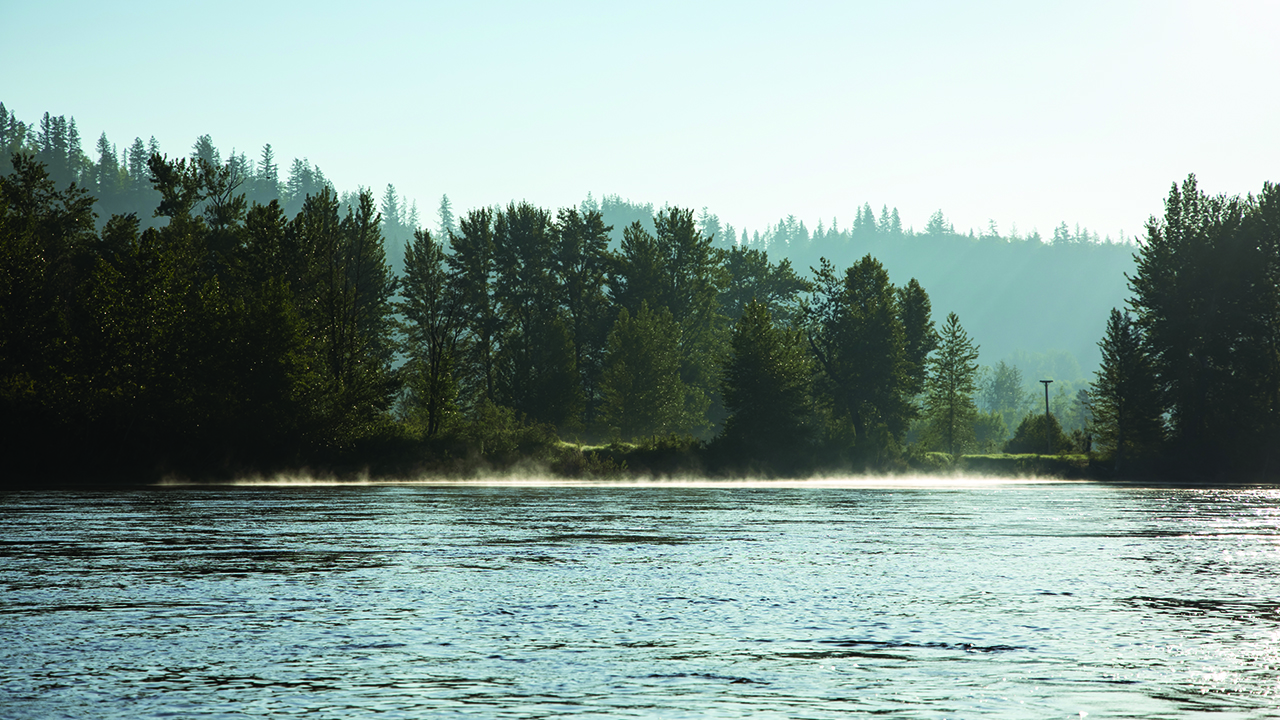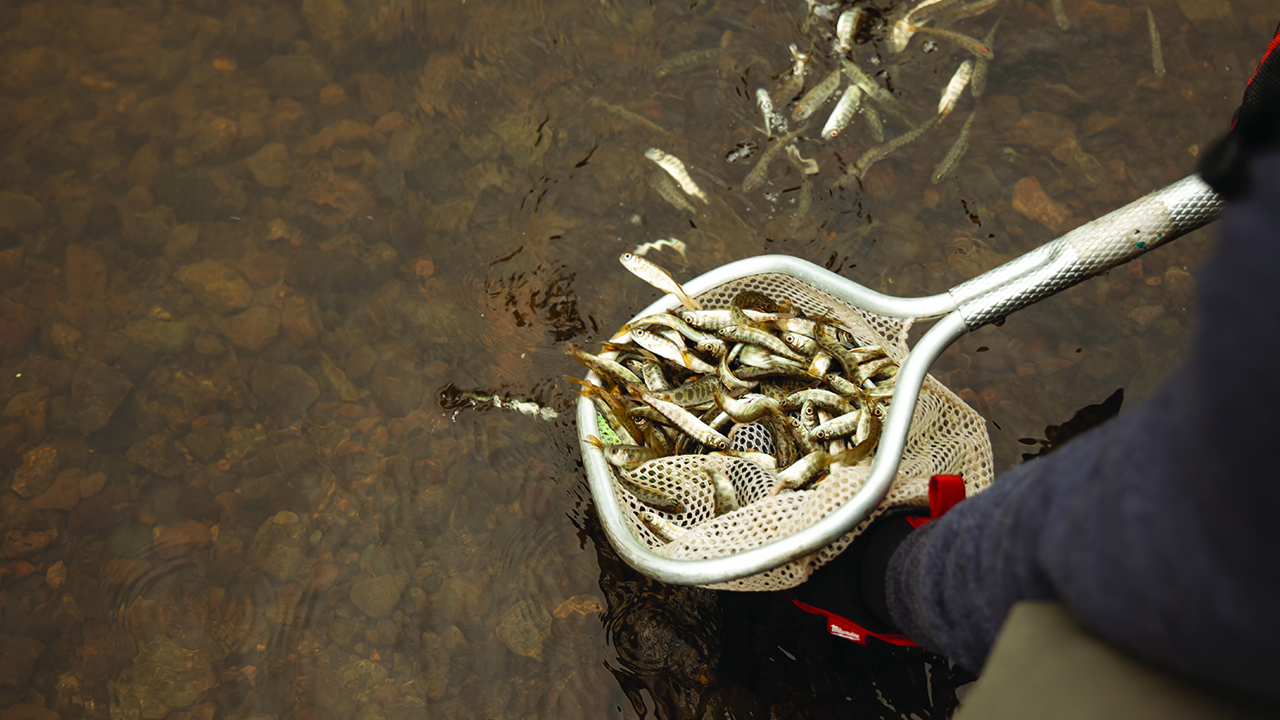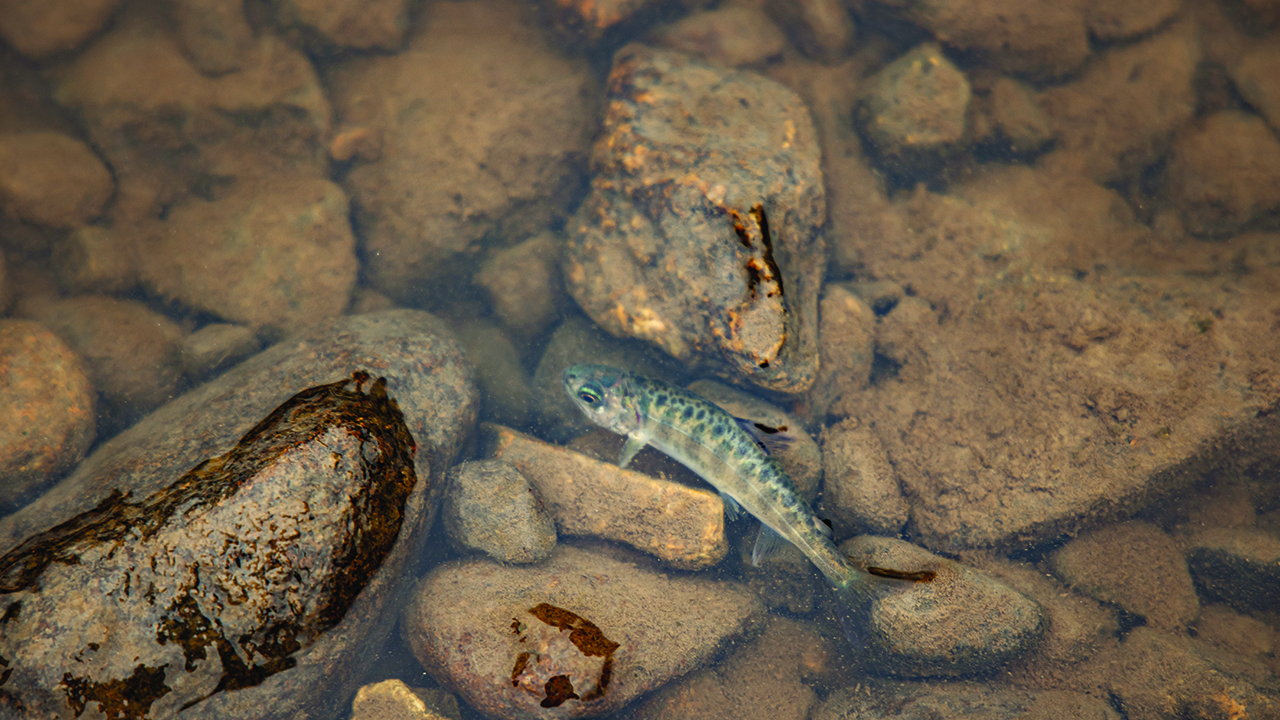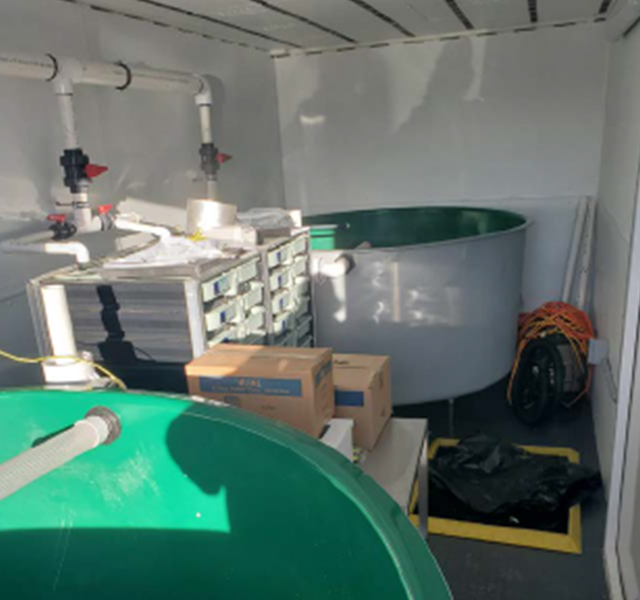Nak’azdli Whut’en at the forefront of the Stuart River watershed revitalization
Posted by Coastal GasLinkFor generations, salmon stocks, a staple in Nak’azdli Whut’en diet and culture, have dwindled in waterways within the Nak’azdli Whut’en traditional territory. A collaboration of Nak’azdli Whut’en and the Upper Fraser Fisheries Conservation Alliance (UFFCA), with support from Coastal GasLink, aims to change that and bring back salmon populations for future generations to enjoy.
Pete Erickson, Nak’azdli Whut’en Fisheries Representative for over a decade, recounts the effects of the salmon population's decline on Nak’azdli Whut’en prosperity.
“We have two generations of people who couldn’t fish so the fish stocks have gone down, our poverty rates have gone up, our cancer rates have gone up, our diabetes rates have gone up and it's all because of the change of diet,” believes Erickson.
Nak’azdli Whut’en along with neighbouring nations, Tl’azt’en and Takla, recognizing this decline couldn’t stand idle and watch this important food source disappear. The nations jumped into action to develop a plan to boost salmon escapement to the Upper Fraser River watershed. To support this drive, the nations enlisted the help of Upper Fraser Fisheries Conservation Alliance (UFFCA), an Indigenous-led agency that provides technical expertise and advice with regards to fisheries management including conservation efforts. Together, a path was forged to rebuild the salmon stocks in the Fraser River watershed through a fish revitalization program.

Natural decline of salmon stock
The Fraser River watershed originates in the Rocky Mountains and meets the Pacific Ocean in Vancouver. The Nechako and Stuart River basins are major contributors to the Fraser River. These basins are located within Nak’azdli Whut’en traditional territory; a region that has suffered from climate change, habitat loss and seen the impacts from overfishing.
The abundance of salmon in the past brings back memories of salmon harvesting for Erickson.
“By the end of salmon season, I was so tired of salmon because from the time the first salmon comes you have boiled salmon, fried salmon, baked salmon and salmon sandwiches,” Erickson recollects. “About November, the first frozen ones (salmon) would come out or the dry ones and you're going ‘oh my God, this is so good! Our grandmother used to store over 600 fish a year! Now that is more than the whole village is allowed to catch out of the early Stuart run.”
Further exasperating the salmon stock declines, a landslide occurred in autumn of 2018 on the Fraser River approximately forty kilometres upstream from the community of Lillooet, BC. The landslide, coined the Big Bar Landslide, essentially cut access to salmon spawning grounds.
Gordon Sterritt, Executive Director at UFFCA recounts how the Big Bar slide further impacted declining fish stocks in the region.
Sterritt explains that the slide, “resulted in less fish returning to the upper Fraser, but at the same time, there's been less fish in the system. We've anticipated larger runs. When it came right down to it, the last couple of years, those runs didn't materialize, and Big Bar has exasperated the situation.”
Building connections to heal the region
With salmon conservation efforts required more than ever, Nak’azdli Whut’en, with UFFCA’s support, worked tirelessly to develop a mobile fish hatchery program. The mobile hatchery is intended to support overall recovery efforts in the Upper Fraser and more specifically the protection of early Stuart sockeye whose decline was significantly impacted by the Big Bar Slide. The project, when complete, will consist of five mobile hatchery units that will have the capacity to incubate and rear several hundred thousand eggs and fry.

Salmon fry being released into the Endako river by a Spruce City Wildlife Association member.
The hatchery project’s environmental benefits are just the tip of the iceberg when it comes to protecting the land and culture. The project will also provide learning opportunities for the next generation of Indigenous people and employment opportunities for First Nations members.
“It gives us four years to train our youth, so we already have fish being hatched for the school to look at. Four years we could show those kids how to catch the fish, take care of the fish. You are looking at a four-year project that will build and by the fourth year will be self-sustaining,” said Erickson.
Tiffany Murray, Director of Indigenous Relations at Coastal GasLink, said the fish hatchery initiative is an example of the project’s commitment to collaborating with Indigenous communities and supporting efforts that are important to them.
“Our Project traverses through the traditional territories of Indigenous communities that hold a rich history and culture and to be able to work alongside Nak’azdli Whut’en on an initiative that will help protect and sustain cultural practices is very rewarding,” said Murray. “Programs like the fish hatchery are key to reconciliation and working with Indigenous groups to help build our shared future,” she added.
Partnership on environmental restoration
The UFFCA puts Indigenous collaboration at the center of its approach to bring back salmon in the Fraser River basin. Sterritt explains the importance of having these partnerships with Indigenous communities to help Indigenous people retain their culture.
For Sterritt, the decline in fish populations affects more than Indigenous people’s food source.
“Loss of our cultural identity. Many of BC’s Indigenous societies were built around the return of the salmon and aquatic resources, and First Nations recognize the linkages and more recently have been implementing measures to restore the salmon and subsequently the culture,” explains Sterritt.
One of the ways that UFFCA is supporting Indigenous fish enhancement projects is by promoting a less expensive fish hatchery option using mobile fish hatcheries. These mobile hatcheries can be used to complement existing permanent enhancement facilities to further support the salmon conservation issues and salmon recovery efforts. The benefit of a mobile fish hatchery is they typically cost less and are faster to set-up as well as are easy to transport to areas that require conservation-based enhancements. The mobile hatcheries are a much-needed development in supporting fish revitalization efforts.


Inside one of the Nak’azdli mobile fish hatchery units.
For Sterritt, the UFFCA efforts in the Nak’azdli Fish Hatchery project have benefits that go beyond simply increasing salmon returns to the natal streams.
Sterritt further explains that Indigenous people, “are working to protect these fish and the biodiversity of these stocks for the future, but at the same time the project builds capacities in terms of employment and works to address food security issues by creating opportunities for greater numbers of fish returning to the area for their communities’ food, social and ceremonial purposes.”
Our legacy in action
Collaboration with Indigenous groups is at the core of our approach to the project in alignment with our commitment to creating an extraordinary legacy of safety and respect for all people, communities and the environment. In addition to the fish hatchery project, Coastal GasLink has participated in and supported other sustainability initiatives aimed at protecting and restoring salmon and salmon habitats. The Spruce City Wildlife Association has worked with Coastal GasLink to release salmon in the Endako River further supporting salmon stock enhancement in Northern British Columbia.
The lasting impact of this project will be felt for many years to come. As Erikson puts it, “if you're in kindergarten now, you will be in grade four when the first fish come back, by the time you go to school you will be catching the fish that we started this year you'll be catching on your own. You'll be graduating, getting married so if you're in kindergarten now in 16 years, you'll be feeding your family with a project we started this year.”